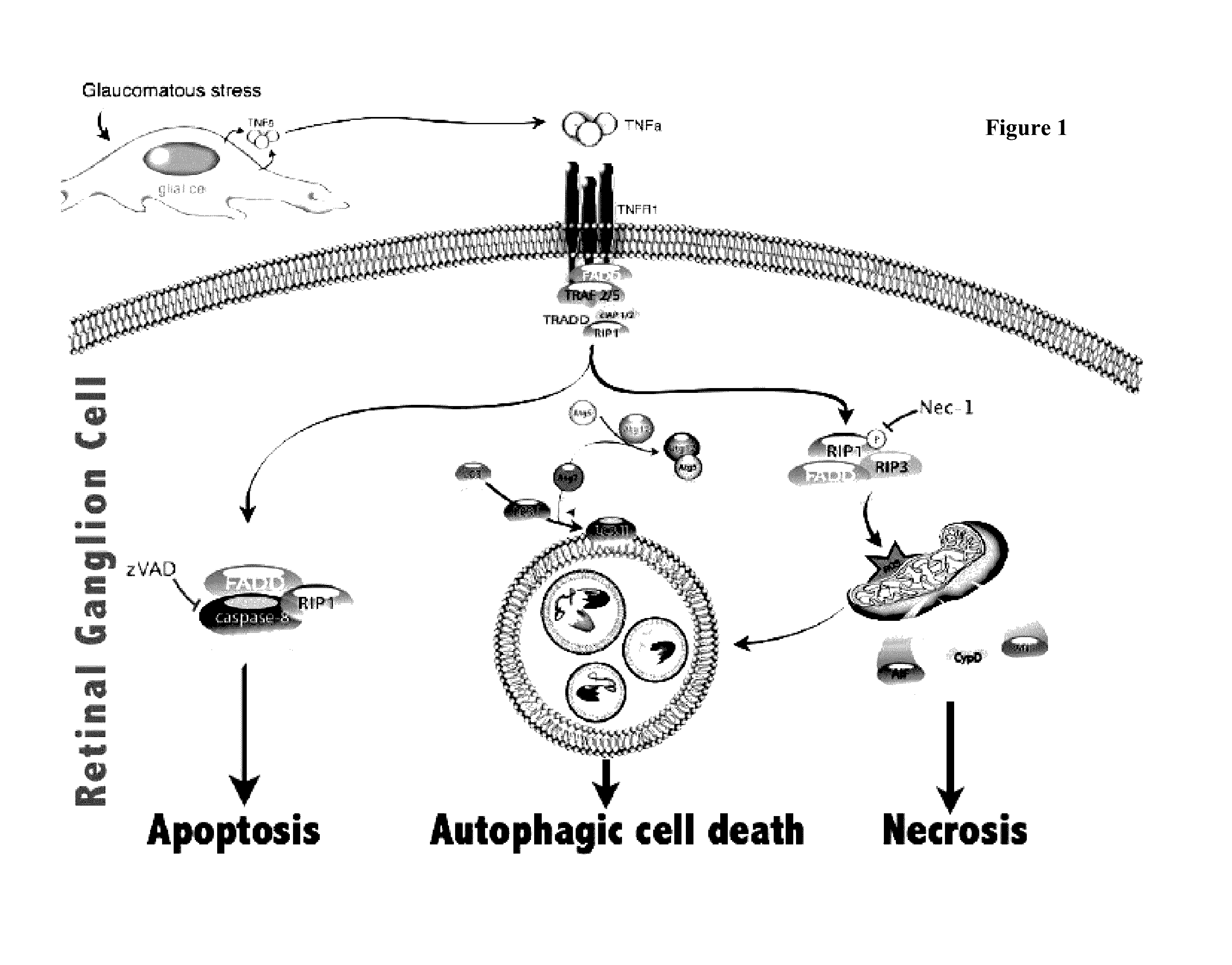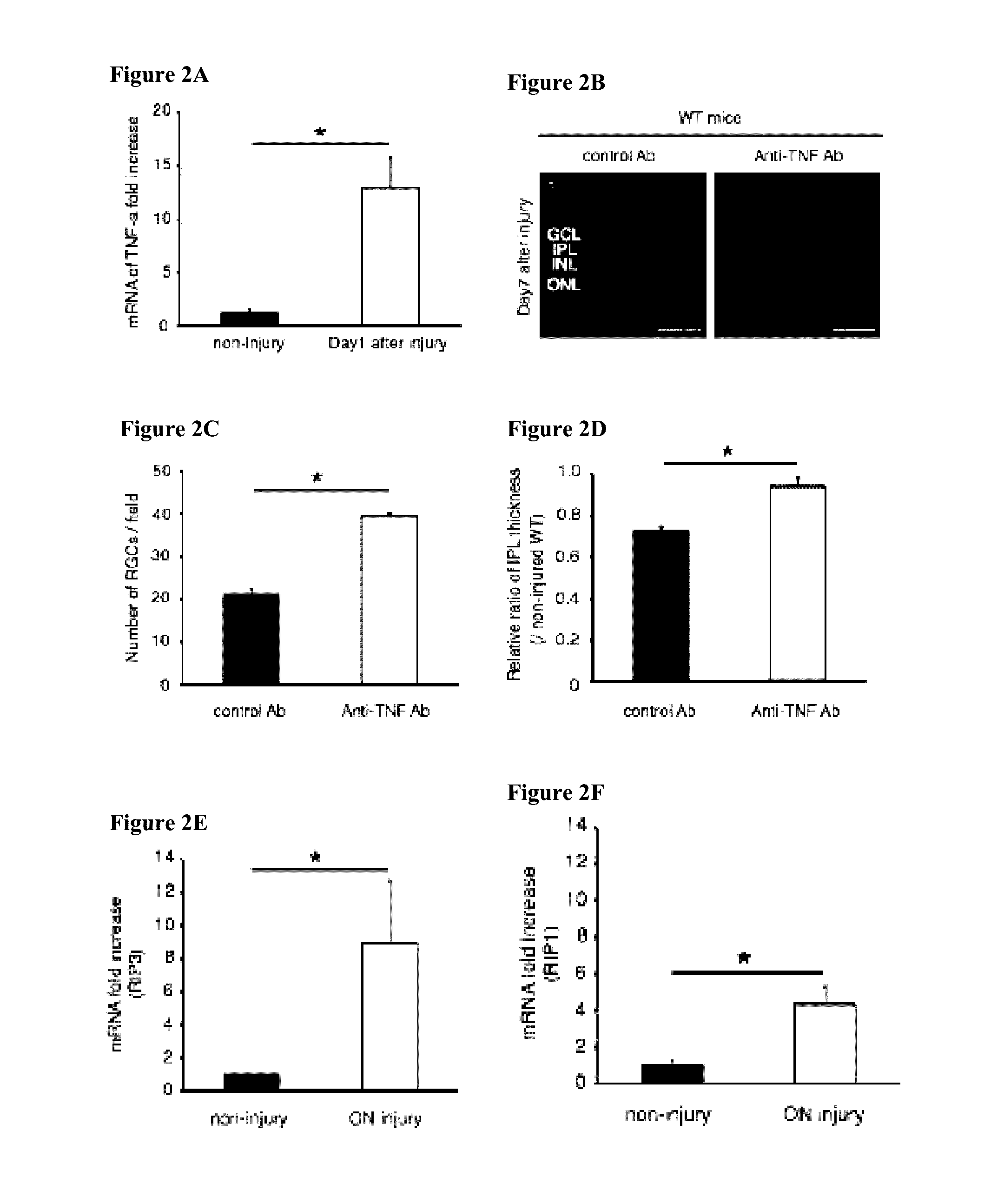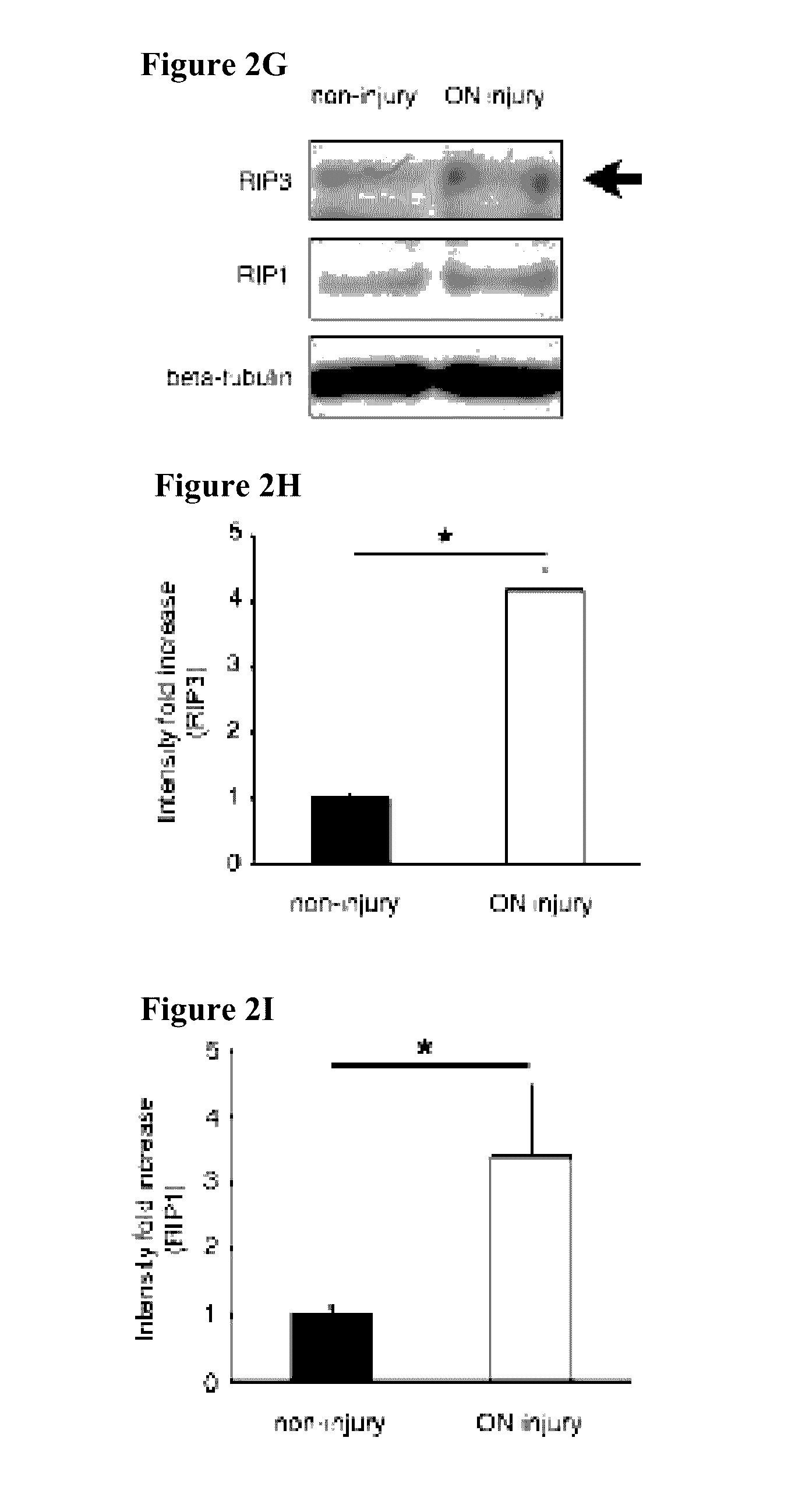Methods and compositions for preserving retinal ganglion cells
a technology of retinal ganglion cells and compositions, applied in drug compositions, heterocyclic compound active ingredients, enzyme inhibitor ingredients, etc., can solve the problems of retinal ganglion cell loss, glaucoma and optic nerve injury, pan-caspase inhibitor z-vad, etc., to prevent retinal ganglion cell loss, reduce or prevent the loss of retinal ganglion cell viability, and reduce the loss of visual function
- Summary
- Abstract
- Description
- Claims
- Application Information
AI Technical Summary
Benefits of technology
Problems solved by technology
Method used
Image
Examples
example 1
Efficacy of a Necrosis Inhibitor and a Pan-Caspase Inhibitor in the Treatment of Glaucoma and Optic Nerve Injury
[0336]Glaucoma is a group of ocular disorders, characterized by optic nerve injury. In most cases of glaucoma, the optic nerve injury is caused by elevated intraocular pressure. Furthermore, higher intraocular pressures are generally associated with greater nerve damage. In this example, mouse models of optic nerve (ON) injury was used to assess the role of RIP-mediated programmed necrosis and apoptosis in this ocular disorder. Given that ON injury is a hallmark of glaucoma, this model also provided an assessment of RIP-mediated programmed necrosis in RGC loss in glaucoma.
A. Neutralization of TNF-α Prevents Optic Nerve Injury-Induced RGC Death
[0337]Recent evidence has demonstrated the role of TNF-α as a mediator of retinal ganglion cell (RGC) death in glaucoma (Nakazawa et al., (2006) J NEUROSCI 26:12633-12641)). Furthermore, in the glaucomatous eye, death receptors of TNF...
example 2
Efficacy of a Necrosis Inhibitor and a Pan-Caspase Inhibitor in Promoting RGC Survival and Axon Regeneration
[0365]Like most pathways in the mature central nervous system, the optic nerve cannot regenerate if injured, leaving victims of traumatic nerve injury or degenerative diseases such as glaucoma with life-long visual losses. This situation can be, at least, partially reversed by enhancing the intrinsic growth state of retinal ganglion cells (RGCs). In this example, the efficacy of necrosis inhibitor and a pan-caspase inhibitor in promoting RGC survival and axon regeneration is investigated using a mouse optic nerve crush model.
A. A Necrosis Inhibitor in Combination with a Caspase Inhibitor Promotes RGC Survival in a Optic Nerve Crush Model
[0366]Mice were subjected to optic nerve crush surgery. Specifically, animals were anesthetized with an intraperitoneal injection of ketamine (60-80 mg / kg: Phoenix Pharmaceutical, St. Joseph, Mo.) and xylazine (10-15 mg / kg: Bayer, Shawnee Missi...
PUM
| Property | Measurement | Unit |
|---|---|---|
| volume | aaaaa | aaaaa |
| diameter | aaaaa | aaaaa |
| distance | aaaaa | aaaaa |
Abstract
Description
Claims
Application Information
 Login to View More
Login to View More - R&D
- Intellectual Property
- Life Sciences
- Materials
- Tech Scout
- Unparalleled Data Quality
- Higher Quality Content
- 60% Fewer Hallucinations
Browse by: Latest US Patents, China's latest patents, Technical Efficacy Thesaurus, Application Domain, Technology Topic, Popular Technical Reports.
© 2025 PatSnap. All rights reserved.Legal|Privacy policy|Modern Slavery Act Transparency Statement|Sitemap|About US| Contact US: help@patsnap.com



